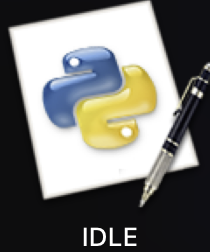 python之道 优雅 明确 简单
python之道 优雅 明确 简单
Beautiful is better than ugly.
Explicit is better than implicit.
Simple is better than complex.
Complex is better than complicated.
Flat is better than nested.
Sparse is better than dense.
Readability counts.
Special cases aren't special enough to break the rules.
Although practicality beats purity.
Errors should never pass silently.
Unless explicitly silenced.
In the face of ambiguity, refuse the temptation to guess.
There should be one-- and preferably only one --obvious way to do it.
Although that way may not be obvious at first unless you're Dutch.
Now is better than never.
Although never is often better than *right* now.
If the implementation is hard to explain, it's a bad idea.
If the implementation is easy to explain, it may be a good idea.
Namespaces are one honking great idea -- let's do more of those!
1.编译型语言与解释型语言

 交互式命令行IDE
交互式命令行IDE
1. 变量名的长度不受限制,但其中的字符必须是字母、数字、或者下划线(_),而不能使用空格、连字符、标点符号、引号或其他字符。
2.变量名的第一个字符不能是数字,而必须是字母或下划线。
3.Python区分大小写。
4.不能将Python关键字用作变量名。

Python有五个标准的数据类型:
- Numbers(数字)
- String(字符串)
- List(列表)
- Tuple(元组)
- Dictionary(字典
